Atmospheric Applications IFS 125HR
Application Notebook
Bruker's IFS 125HR spectrometer is designed as an ultra-high resolution FT-IR spectrometer which provides outstanding performance for R&D laboratory application.
Bruker's IFS 125HR spectrometer is designed as an ultra-high resolution FT-IR spectrometer which provides outstanding performance for R&D laboratory application. But many of its installations are used for highly accurate atmospheric trace gas analysis, atmospheric emission studies, and remote monitoring of atmospheric pollutants. Measurements of human made atmospheric pollution are made either in transmittance by using the sun as active IR radiation source or in a passive emission mode.
Permanently Aligned IFS 125HR Interferometer
The IFS 125HR features a precise cube corner Michelson interferometer. The moving cube corner mirror is translated on a hybrid bearing as the design ensures beam integrity over the course of the scan; no active alignment is needed. The permanently aligned scanner provides several important advantages: the sensitivity is maximized, the indispensable long-term stability of the interferometer is inherently maintained, and the spectral range extension is simplified. Beamsplitters can easily be exchanged by the user.
Solar Tracker
For atmospheric transmittance measurements, the solar radiation is collected by a solar tracker system, which automatically follows the position of the solar source. To ensure a very high pointing accuracy, the image of the sun on the spectrometer's input aperture is observed by a camera. An image processing software (called CamTracker [1]) calculates the relative position of the centers of the sun versus the input aperture and gives feedback to the tracker's motors (Figure 1).
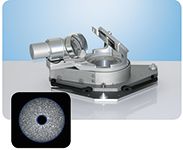
Figure 1: A547N Solar tracker accessory for the IFS 125HR. Inset: Image of the sun on the input aperture of the spectrometer. The two blue circles show the calculated positions of the two objects.
Dedicated Installation Examples for Atmosphere Application
The IFS 125HR dual channel DigiTect™ technology together with dichroitic optical components and the modular design of the instruments optics bench allow very special instrument configurations to apply the IFS 125HR spectrometer for a broad spectral range in parallel measurements. The following two installations are mentioned.
a) Meteorological Bureau Shenzhen
At the Meteorological Bureau China a unique setup of three IFS 125HR high resolution spectrometers have been installed recently placed in a new astronomical observatory which is located in Shenzhen, a small city near Hong Kong. The observatory was built and sponsored by the local government.
The aim is to monitor atmospheric trace gases in three different configurations: a) facing the sun (using a solar tracker) to get the absorption features from the upper atmosphere; b) aiming to either the sea -clean background- or c) to the city -polluted- to get an emission signal from the sky using the same solar tracker optics. The special feature in Shenzhen is that three compact IFS 125HR instruments— without the standard sample compartment — can be used simultaneously and continuously to acquire spectral data in the complete MIR, NIR, and VIS-UV spectral ranges, 600 cm-1 through 33,000 cm-1. Any other customer would be forced to change optical components and has to take the measurements of different ranges one after the other.
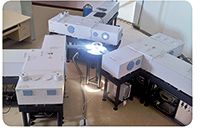
Figure 2: Arrangement of three compact IFS 125HR spectrometers installed in the new astronomical observatory at the Shenzen Meteorological Bureau in China.
As shown in Figure 2, the solar beam is captured by a large Chinese made solar tracker mounted under the dome of the observatory. The solar radiation is then guided down to a 3 × 120° reflective beam splitter that evenly distributes the radiation to the input ports of the spectrometers (Figure 3).
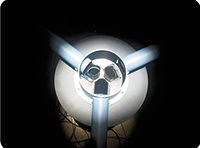
Figure 3: Close view onto the 3 à 120° reflective beam splitter that evenly distributes the IR radiation to the input ports of the IFS 125HR spectrometers.
b) Polar Night Measurement
During natural phenomena such as sunset and sunrise in which the absorbance path through the atmosphere is considerably extended, the available measurement time is limited. Therefore, the dual channel data acquisition technique in connection with a dichroic beamsplitter is a very efficient technology as it allows parallel data acquisition with two dedicated and optimized detectors in two different spectral ranges. Beside highest spectral resolution the IFS 125 series provides the highest measurement sensitivity.
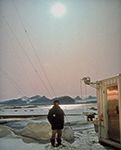
Figure 4: Measurement during the polar night using the moon.
It has been proven that this technique can also be used with the moon as the IR source although the radiation power is orders of magnitude lower compared with the sun (Figure 4). Thus it was possible to observe the full seasonal cycle of important trace gases like HNO3 (Figure 5), HCl, HF, and ClONO2 in the Arctic (2).

Figure. 5: HNO3 spectrum, resolution 0.02 cm-1 with the moon as an IR source, measured during the polar night (2).
Conclusion
The above described installation examples demonstrate the outstanding IFS 125HR instrument flexibility and high measurement sensitivity for high resolution atmospheric studies in the IR, NIR, VIS, and UV spectral ranges (3,4). No other commercial high resolution FT-IR spectrometer would be able to fulfill such application requests. More detailed information about the IFS 125HR as well for laboratory application is described in the instrument brochure.
References
(1) M. Gisi et al., "Camtracker: A New Camera Controlled High Precision Solar Tracker System for FT-IR-Spectrometers," Atmos. Meas. Tech. 4, 47–54 (2011).
(2) J. Notholt and O. Schrems, "Ground-Based FT-IR Spectroscopic Absorption Measurements of Stratospheric Trace Gases in The Arctic With the Sun and the Moon as Light Sources," J. Mol. Structure 347, 407–416 (1995).
(3) N.M. Deutscher et al., "Total Column CO2 Measurements at Darwin, Atmos. Meas. Tech., 3, 947–958 (2010).
(4) R. Kohlhepp et al., "Observed and Simulated Time Evolution of HCl, ClONO2, and HF Total Column Abundances," Atmos. Chem. Phys. 12, 3527–3556 (2012).
Bruker Optik GmbH
Ettlingen, Deutschland
tel. +49 (7243) 504-2000, fax +49 (7243) 504-2050
Website: www.bruker.com/optics
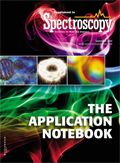
A Seamless Trace Elemental Analysis Prescription for Quality Pharmaceuticals
March 31st 2025Quality assurance and quality control (QA/QC) are essential in pharmaceutical manufacturing to ensure compliance with standards like United States Pharmacopoeia <232> and ICH Q3D, as well as FDA regulations. Reliable and user-friendly testing solutions help QA/QC labs deliver precise trace elemental analyses while meeting throughput demands and data security requirements.